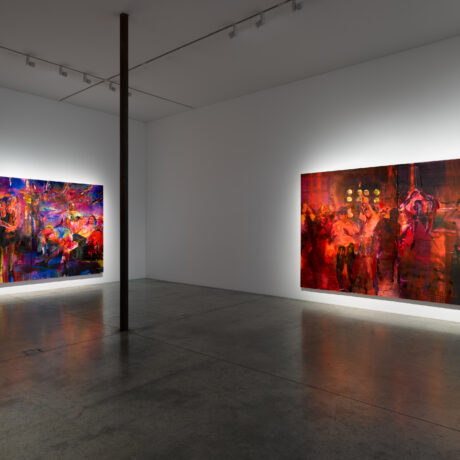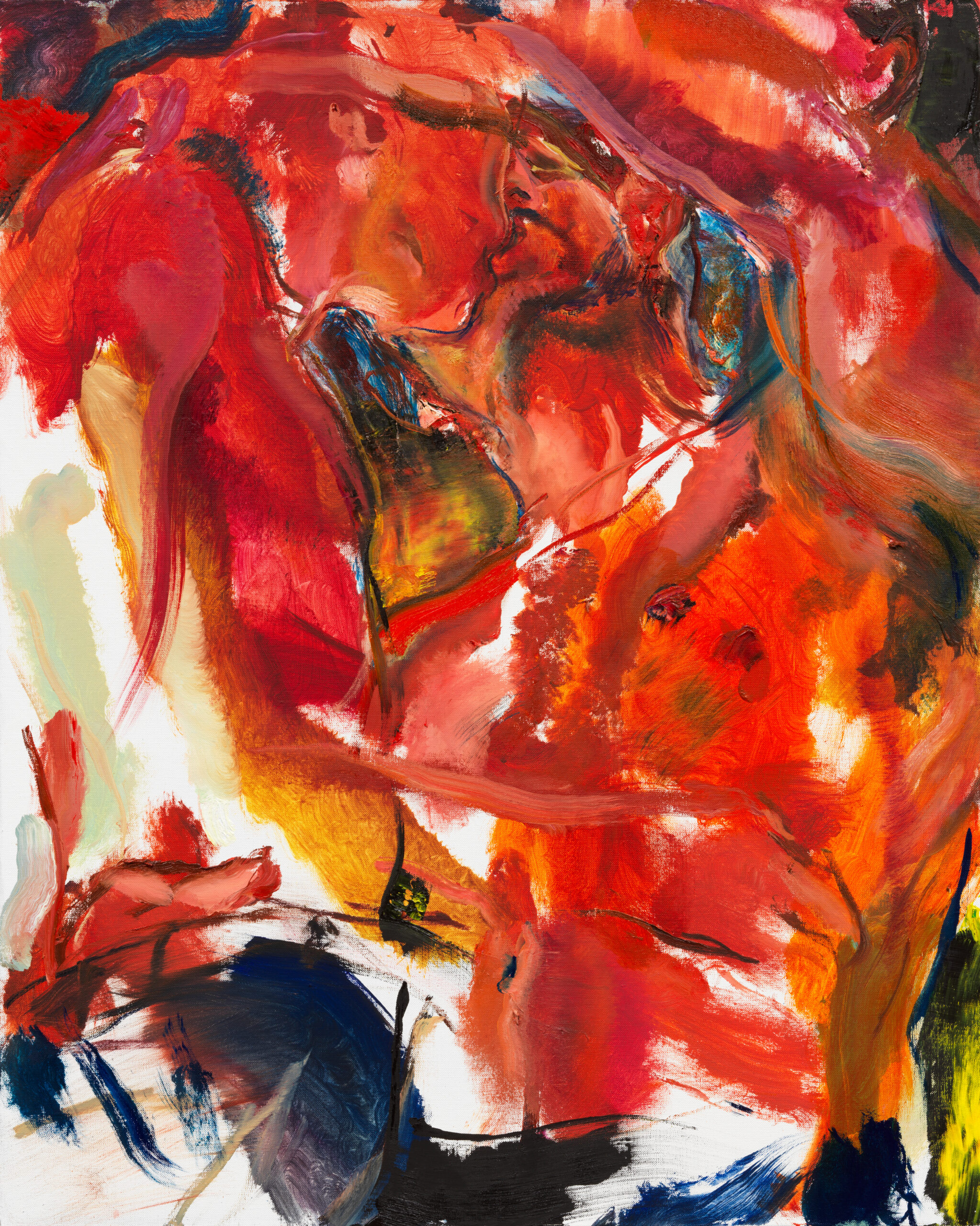
Two figures intertwined, lips locked, arms wrapped around the other. Two individual bodies hotly soldered into one. Two halves indistinct burn bright into a single whole. Red paint swells and spreads across the canvas. Red paint, or rather the heat of their embrace, swallows all that surrounds. From mouth to hand, chest to head, red pulses and pushes upwards, expanding out and over these two overlaid forms.
This is the suitably titled painting Kissing (2023), a small yet resonant work in Victoria Miro’s latest show, Doron Langberg: Night. Although this triumphant exhibition will be rightly remembered for its powerful polychromatic panoramas of queer social scenes, the show’s quieter, less dramatic and dominating works should not be ignored. In Kissing, the thematic, formal and stylistic characteristics that make Langberg’s larger works so electrifying can be found. Known for his figurative portraits of queer intimacy, evocations of erotic and emotive togetherness rendered in radiant colours, and roving, gestural brushwork, Langberg’s smaller studies are where it all began. The artist has spoken about how these portraits came about during his art school days, where works on landscape gave way to privately drawn explorations of his own personal life and that of his friends. Painterly intimations of intimacy, such as Kissing, began then in the privacy of his own living space and relationships, not in the broader realms and spheres Langberg masterfully stages in Night. We see in this exhibition, therefore, the coming together of artistic stages and spaces as well as bodies and groups. We see the coming together of the private in the public, the personal in the general, the light in the night. Embedded within these affective and effective painted expanses, figures emerge and converge, like our passionate couple in Kissing, creating a world of heat and, well, yes, horniness, all of their own. Moving from the wild scenes of queer nightclubs and hotspots to the specific sites and situations of bodies, Doron Langberg: Night is a meeting of multiple forms and expressions, communities and communal stages, where general passion becomes anchored in the personal, and a collective moment is hinged on the excitement of a single kiss.
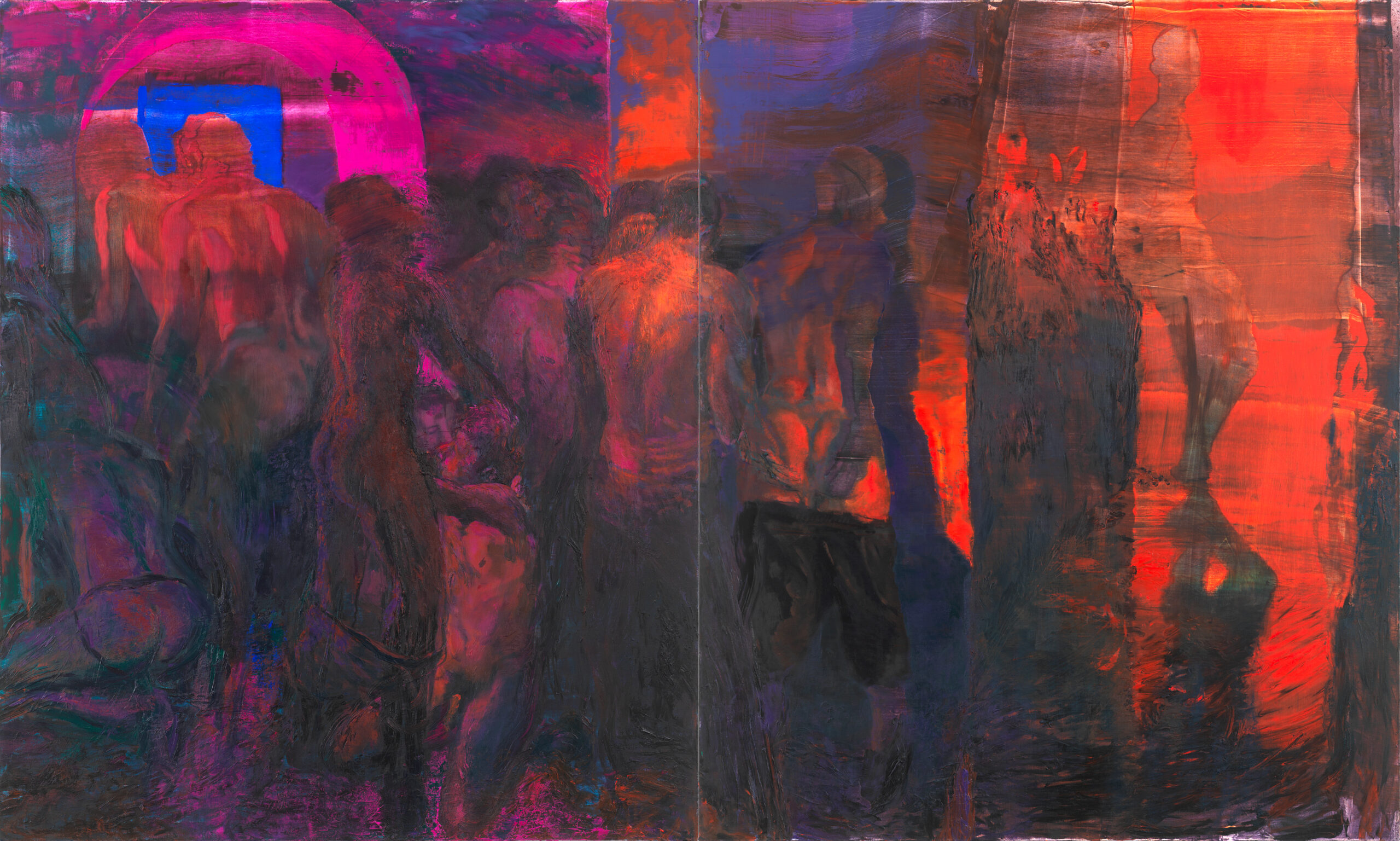
In Wrecked (2023) this sense of the general overflowing from the personal is fulsomely on display in deep purples, reds and pinks. Situated in an almost subterranean nightclub, a shimmering underworld of revelry and romping, Wrecked positions the viewer from the other side of a cluster of couples and throuples mid-action. Enveloped, one within the other, the bodies radiate pleasure as well as the physical pressure of skin-on-skin sexual proximity. Despite standing outside of this immersed group, the depths of Langberg’s colours – the saturating pinks and accents of glowing red on bare backs, bottoms and necks – involve us and invite the viewer into the vibe of the scene, if not into the erotic acts themselves. In fact, there is a choreography at play here, one where the lighter lineaments of lust give way to harder, sculptural proximations of form. Thicker, impasto-like paint accentuates this hardening of bodies and the spaces they co-create, solidifying not only the erotic tension of the sight but its emotional intensity too. Individual experiences of pleasure (and perhaps pain, too) dictate and develop the visual plane, broadening out into the generalised spatial parameter of desire, which, in turn, our eye desires to trace and see. As with Kissing, Wrecked gives us the tender and touching details as well as the full flush and thrust of touch between men.
Yet there is a counterpoint to this collagic overlay of corporeal coordinates. In the upper left-hand corner of the composition, a shadow of a figure appears, leaning against a wall with a red sun of a wash setting behind. Standing apart, wistfully leaning into the scene yet very much away from it, the figure takes on all our preconceptions but admits none. Is it the artist? Is it the viewer, our chimerical counterpart manifesting into the lush landscape of the work? Or is this the still and solitary form that emits and exudes the visceral and vigorous whole? Alone yet silently composed, the contours of the figure almost disappear into the darker recesses of the space only to reappear in his insistent singularity. Here, Langberg’s isolation at once reminds us of the loneliness, even anxiety and alienation, that some individuals may feel in hypersocial and sexual spaces. Then again, it may be that our single man will remain just that: unwillingly on his own, an onlooker not a partaker, longing but never belonging to the loving mass behind him.
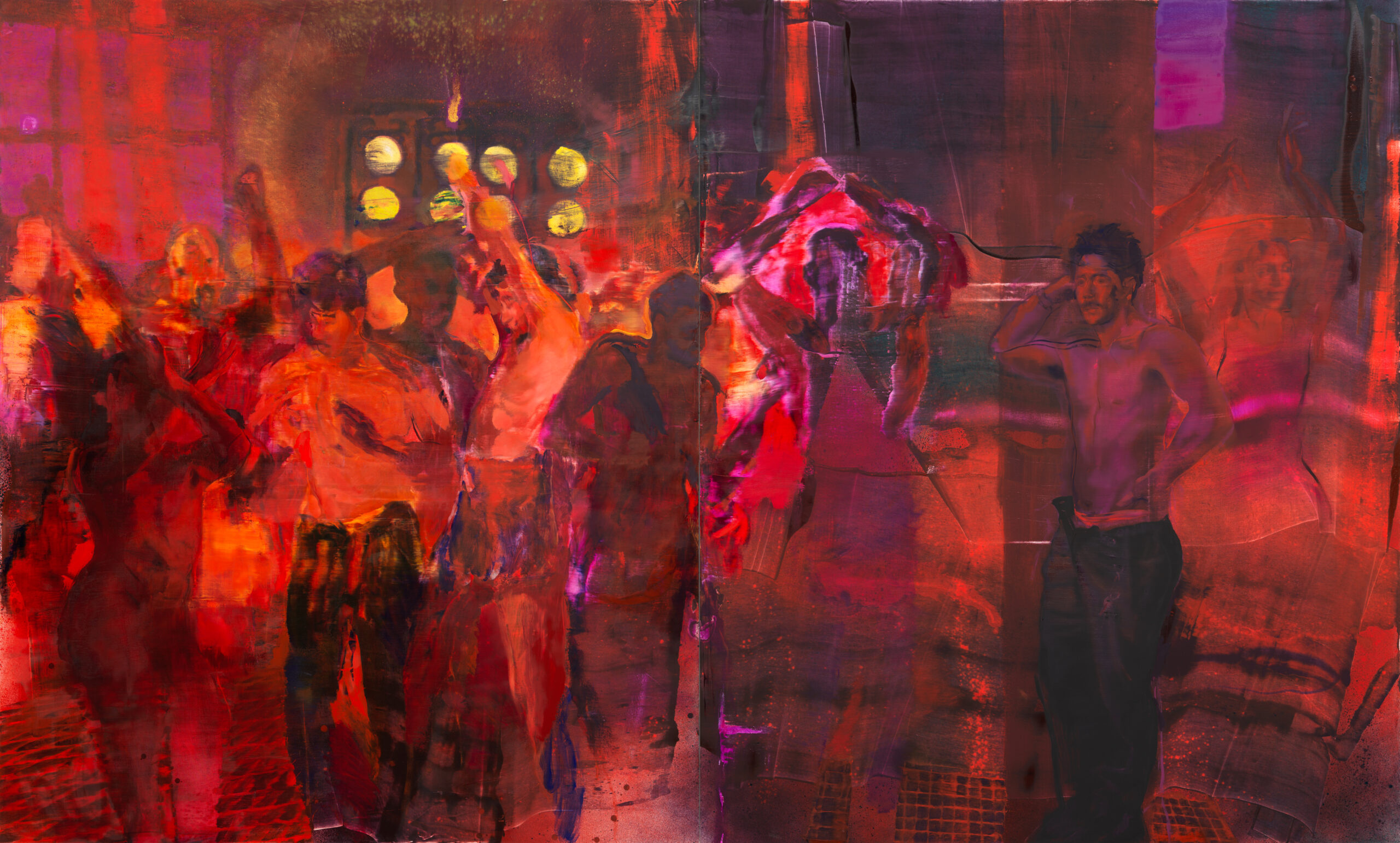
Langberg repeatedly returns to the solitary figure in his epic works. The elusive yet evocative person flying – or rather standing – solo is no one-off – nor is he a mood killer. In Basement (2023), a man stands, slightly perplexed, towards the right side of the foreground. Unlike the figure in Wrecked, he is less shadow and more fleshed out persona, one whose slightly dishevelled appearance (undone jeans, tussled hair) betrays his own prior involvement in the swirling bodily hubbub around him. Like the figure in Wrecked, however, he too provides a still focal point with which to process and witness the surrounding motion and commotion. In this, these more pronounced or figured figures become narrators through which we read those in the story of the space. These more realised forms and personas do not so much as break out of the hazy and condensed cacophony of energetic moving, living, loving and being but accentuate it. They become the focalising subject in Langberg’s exploration and celebration of queer subjectivities. For that is exactly what the artist is really claiming and reframing in his grand nightclub scenes and set pieces: queer being in all its kaleidoscopic and microscopic, infinite and finite, loud and quiet multitudinousness. The single figure, whether loved or abandoned, seen or overlooked by those around him, reminds us that these works are about queer expression and experience, as much as they are about queer sex.
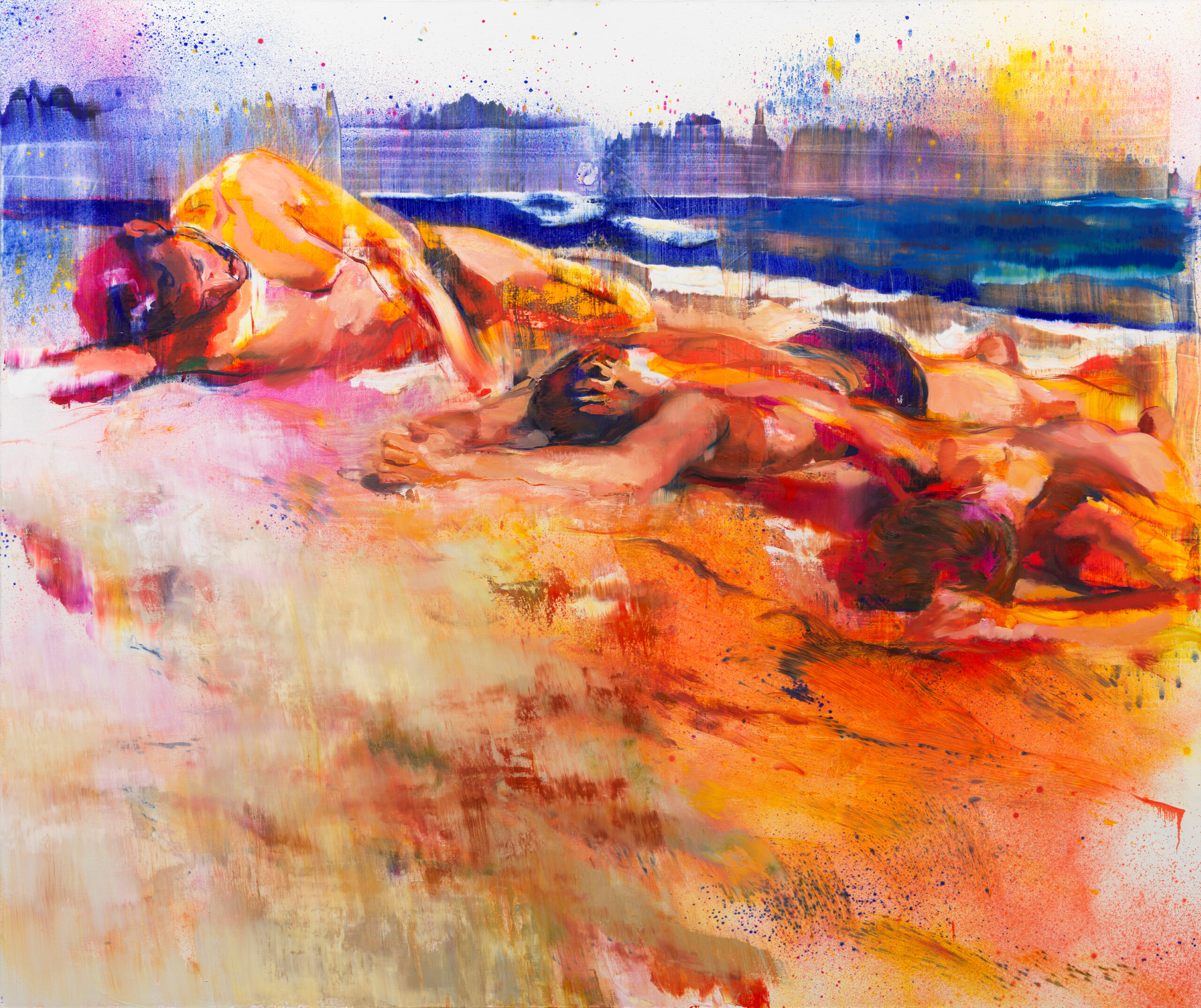
As microcosms of macrocosmic scenes, these single figures, alongside the more pronounced couplings of Merge (2023) and Morning on the Beach (2023), are spaces unto themselves. Although Langberg titles his paintings after actual queer clubs and events – Wrecked, Merge, Dark Room (Underwear Party) (2023) – he frequents, they are not works that set out to document queer spaces and relationships. Rather, his paintings are about inhabiting the mood of such environments, evoking the feelings of their inhabitants, and dwelling in the emotion of these uninhibited moments. The radical power of these paintings exists not in Langberg’s decision to depict queer sites and sights, but rather in the style and sensibility of the depiction itself. Free of current politics, the lack of politicisation when it comes to representation in Langberg’s work is the freedom. This aesthetic and poetics of abundance – in colour, form and scale – could also be the politics behind his visions, but even excess in pictorial and artistic touch supersedes such a definition. What Langberg actually achieves is an erotics of paint and style, an erotics beyond simply that of the individual and the conjoined bodies captured (though they are of course part of it). It is an erotics, perfectly theorised by queer poet and thinker Audre Lorde, about where and who the power lies with; and in the works that make up the exhibition, the power is in Langberg’s ability to imagine and breathe life into such lived and living visions. Here are queer subjectivities unleashed, in space and time, but also queerly and brilliantly traversing both, consciously and deliberately stretching out across the canvasses and walls in epic fields of galactic and near utopic colours, suspending normative chronologies and rewinding the clock entire.
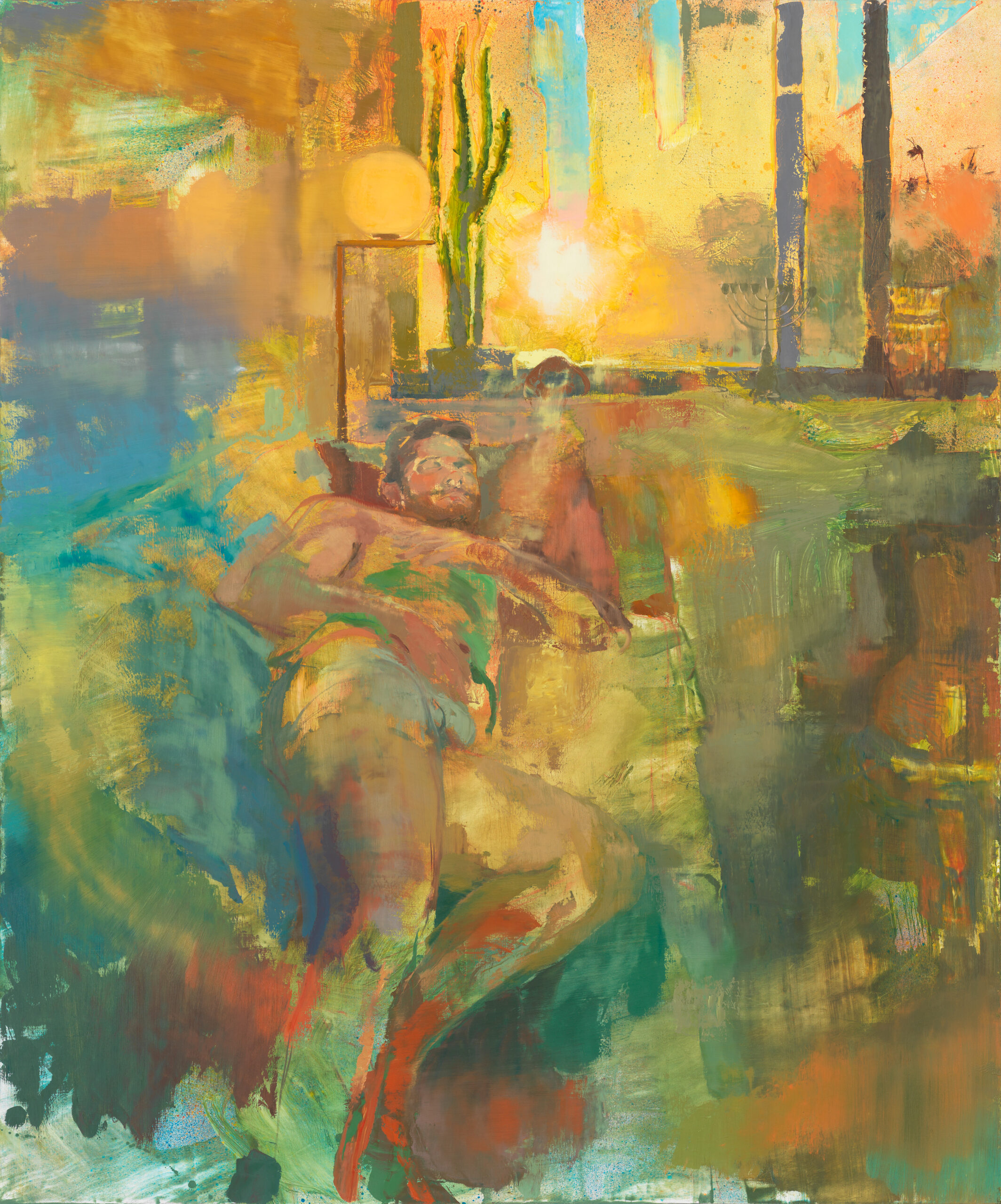
Temporality is, of course, at the heart of Langberg’s show. Titled ‘Night’, the exhibition moves between darkness and daylight, late evening through to the early hours of the morning. But this timeline or cyclical clock of being are not the temporalities to which Langberg paints. Though the works in the upper gallery are flooded with light, it is a light emerging from night, an effusion of emotion from having existed and exulted and exhaled in areas that are very much for and formed by the queer subject only. Notions of normative temporality then are deferred and queered, so that a single kiss is extended into the beyond and the time it takes to touch suffuses into the taste of a mouth, the feel of a hand, the sweat and heat and smell and sticky tension of one body colliding with another. There, in close human communication and interconnection, temporality is remade and deepened, night pouring into day, as seen in Sunrise (2023), where the true light emerging is the glow of a single body luxuriating in its own energy, spent by club revelries perhaps, but satisfactorily so, carrying that glow and radiance of before into the new day of tomorrow. Here, the touch of night illuminates, queer subjectivity shines and the exuberant joy of these energising and erotically enterprising scenes offer us a new time in which to see and be. Doron Langberg: Night demonstrates that a single kiss is never just a kiss, but maybe a thousand nights and lifetimes in one.
Written by Hannah Hutchings-Georgiou
Doron Langberg: Night is showing at Victoria Miro from 26 January until 28 March 2024.
FIND OUT MORE